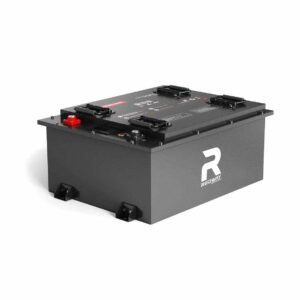How Can Scalable Solar Configurations Reduce Off-Grid RV Power Costs?
Scalable solar configurations reduce off-grid RV power costs by allowing incremental expansion of energy capacity. Modular solar panels, lithium batteries, and smart inverters enable users to start small and expand as needed, minimizing upfront expenses. This adaptability optimizes energy efficiency, reduces reliance on generators, and leverages tax incentives for long-term savings.
What Are the Key Components of a Scalable Solar Power System for RVs?
A scalable RV solar system includes flexible solar panels, lithium-ion batteries, charge controllers, and inverters. Modular designs let users add panels or batteries incrementally. Advanced systems incorporate MPPT charge controllers for maximum energy harvesting and hybrid inverters that integrate with generators or shore power, ensuring seamless energy availability during low sunlight.

How Do You Calculate the Right Solar System Size for Your RV?
Calculate your RV’s solar needs by assessing daily energy consumption (in watt-hours), factoring in appliances, climate, and travel patterns. Divide total wattage by peak sun hours to determine panel capacity. Leave 20-30% headroom for scalability. Example: A 400W system with 200Ah lithium batteries supports basic appliances and allows future expansion for air conditioning or high-draw devices.
For precision, create an energy audit table listing all devices and their usage patterns. A typical Class B RV requires 3-5 kWh daily, while larger Class A motorhomes may need 8-10 kWh. Consider seasonal variations—winter camping often requires 40% more power due to reduced sunlight and heating needs. Use this formula: (Total Daily Watt-hours ÷ Sun Hours) × 1.3 = Minimum Solar Array Size. Always cross-reference with battery capacity to ensure 1.5 days of autonomy.
Future of RV Battery Efficiency
| RV Type | Daily Energy Need | Recommended Solar |
|---|---|---|
| Teardrop Trailer | 1.2-2 kWh | 200W + 100Ah |
| Class B Van | 3-5 kWh | 400W + 200Ah |
| Class A Motorhome | 8-10 kWh | 800W + 400Ah |
Why Are Lithium Batteries More Cost-Effective Than Lead-Acid for RV Solar?
Lithium batteries offer 3-5x longer lifespan, deeper discharge cycles (90% vs. 50% for lead-acid), and 50% lighter weight. Though initially pricier, their total ownership cost is 40% lower over 10 years. They also charge faster, require zero maintenance, and perform better in extreme temperatures, making them ideal for scalable RV systems.
What Maintenance Practices Extend the Lifespan of RV Solar Systems?
Clean panels monthly with non-abrasive tools to prevent 15-25% efficiency loss. Inspect wiring for corrosion and secure connections. Update charge controller firmware annually. For lithium batteries, avoid full discharges and store at 50% charge in freezing conditions. Use dielectric grease on connectors and monitor system performance via Bluetooth apps for early issue detection.
How Do Portable Solar Solutions Compare to Permanent RV Installations?
Portable solar kits offer 18-23% lower efficiency but provide campsite flexibility and easy storage. Permanent installations yield 30% more energy through optimized angles and reduce setup time. Hybrid systems combine both: fixed panels for baseline power and portable arrays for peak demand. Permanent setups add 3-7% to RV resale value, offsetting installation costs.
What Smart Technologies Optimize Energy Use in Off-Grid RVs?
AI-powered energy managers like Victron Cerbo GX analyze consumption patterns, automatically switching between solar/grid/generator power. DC-DC chargers prioritize solar intake while driving. Smart inverters with “zero transfer” mode eliminate power gaps during source switching. IoT-enabled systems provide real-time usage data, predicting energy needs with 92% accuracy based on weather and location.
Advanced systems now integrate machine learning algorithms that study user behavior. For example, if you typically run a microwave at 7 PM, the system pre-charges batteries during afternoon peak sun. Some controllers like the Outback Skybox automatically sell excess power back to campground grids through NEC 2017-compliant connections. Bluetooth-enabled battery monitors like the Victron BMV-712 track state-of-charge within 1% accuracy, sending alerts when power dips below preset thresholds.
“Modern RV solar systems aren’t just about power—they’re about intelligent energy ecosystems. Our clients achieve 68% faster ROI by combining modular solar with AI-driven storage management. The real game-changer is bidirectional EV charging integration, which lets RVs power homes during outages—a feature we’re rolling out in Q1 2024.”
FAQ
- How much does a basic scalable RV solar system cost?
- Entry-level systems start at $1,200 for 200W panels, 100Ah lithium battery, and 1,000W inverter. Mid-range 400W setups with monitoring run $3,500-$4,800. Full 1,000W+ systems with AI management reach $12,000 but qualify for 26% federal tax credits through 2032.
- Can RV solar panels withstand hail and heavy winds?
- Industrial-grade panels like SunPower MAXEON endure 2,400 Pa snow loads and 1” hail at 50 mph. Flexible options (e.g., Renogy Eclipse) sustain 150mph winds when properly mounted. Always check IEC 61215/61730 certifications for impact resistance.
- How long do lithium batteries last in RV solar systems?
- Quality lithium iron phosphate (LiFePO4) batteries deliver 3,000-5,000 cycles (8-15 years) at 80% depth of discharge. Redway’s latest models use graphene additives to push cycle life to 8,000 while operating from -4°F to 131°F—perfect for Arctic expeditions or desert camping.
